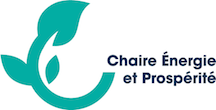Former title of this working paper: Pervasive EUAs free allocation: the case of the steel industry
Sectors that are considered to be subject to international competition under the European Emission Trading Scheme (EU-ETS) still benefit from free allocation of European Allowances (EUAs). Herein we study one of those beneficiaries: the crude steel industry.
Firstly, we find it is not strongly exposed to international competition. Moreover, we find that the relevant market is concentrated and that the firm with most market power throughout 2005-2018 is the one receiving most of free EUAs capturing most of the overallocation profits (34.87% in average). Finally, after performing a frontier analysis we find that the market leader is also the least efficient in producing crude steel and consequently the least efficient in terms of CO2 intensity. These findings suggest the EU-ETS has failed to provide incentives for decarbonization in this sector.
Séminaire en présence d'Adam George (SOAS, University of London). Adam George présente un modèle macroéconomique SFC environnemental britannique intégrant émissions de CO2 et investissements verts de tous les agents économiques. Le modèle trimestriel analyse l'impact des politiques énergétiques selon le rapport capital vert/capital conventionnel. Quatre scénarios fiscaux verts sont testés (2022-2035) : taxe carbone, investissement...
Le laboratoire GAEL (Grenoble Applied Economics Laboratory) et la Chaire Energie et Prospérité organisent un workshop sur l’économie de la bioénergie les jeudi 9 et vendredi 10 octobre 2025 sur le campus universitaire de Grenoble.


